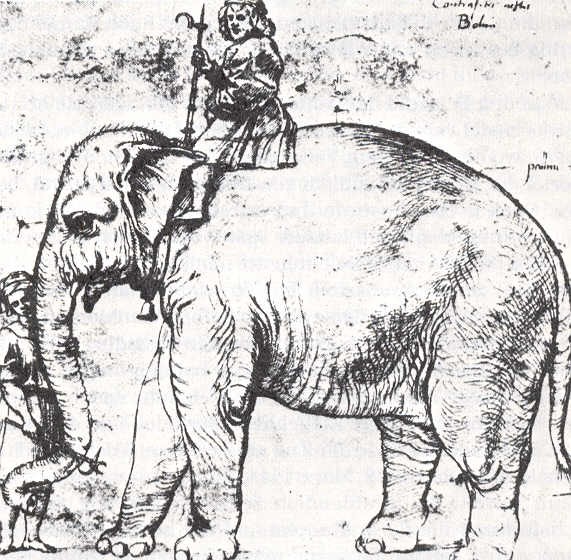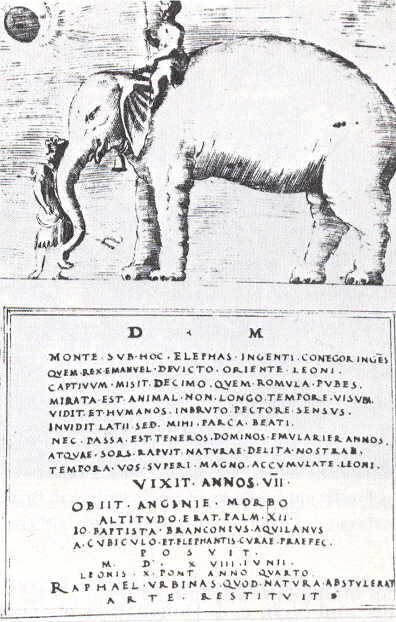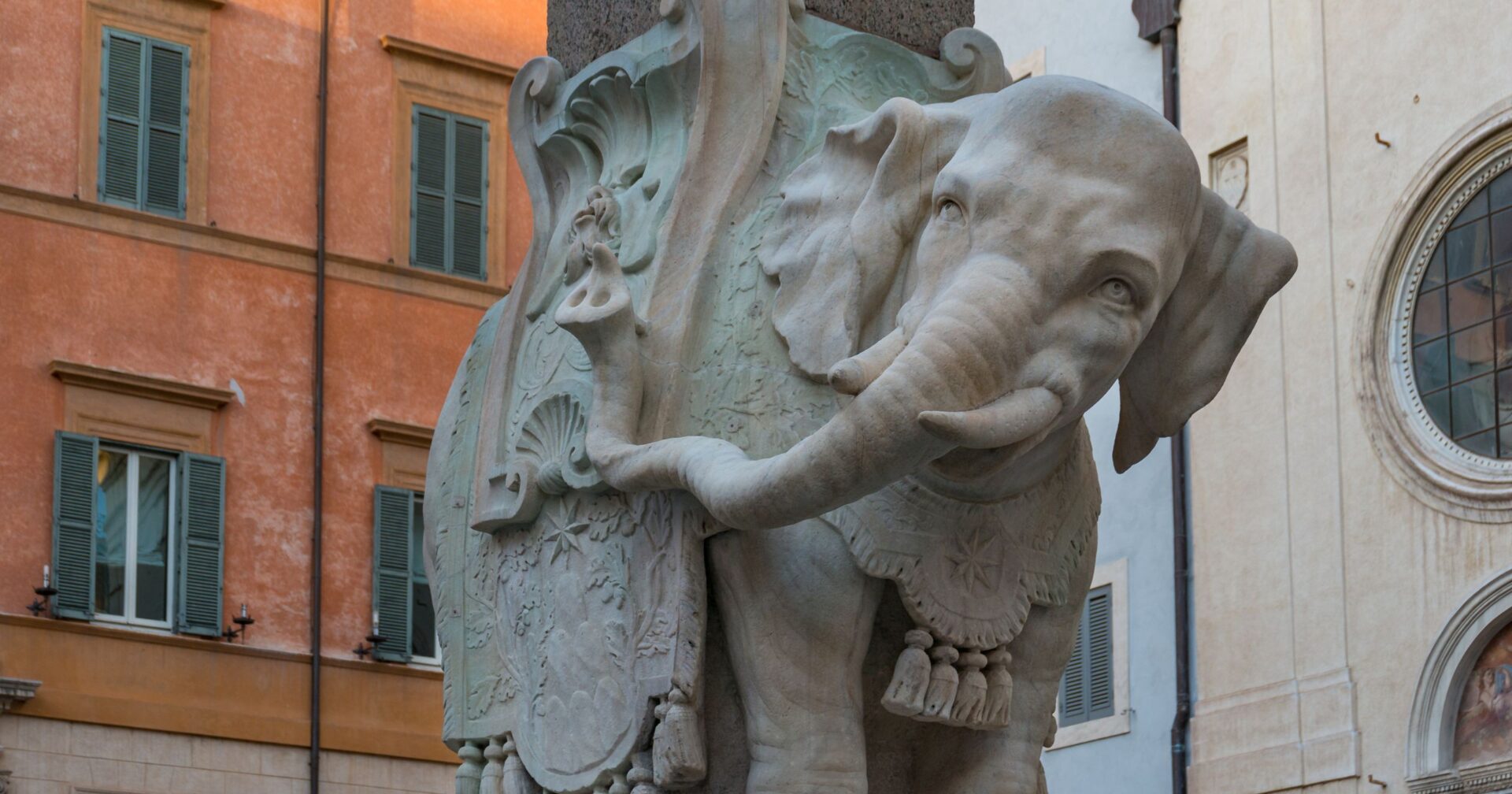Digging up the Vatican’s Belvedere Courtyard in 1962, workers tasked with upgrading a heating and cooling system hit bone. They found a large tooth, and four pieces comprising a rather giant jaw bone. The workers believed they discovered dinosaur bones, but they weren’t fossilized as expected upon examination. The workers unearthed something much more peculiar: elephant bones.
Giovanni di Lorenzo de’ Medici was elected to the papacy on March 9th, 1513, taking the papal name Pope Leo X. It was tradition for Catholic monarchs to send gifts to newly elected popes in a show of good will and to maintain a good relationship, and King Manuel I of Portugal was no exception. At his coronation ceremony, Pope Leo X received many goods the Portuguese acquired through their global trading: textiles, precious metals, and exotic animals – of which included Hanno: an Asian elephant.

The first elephant to come to Italy in centuries, Hanno arrived at Port Hercules from Lisbon in 1514 at just four years old. From there, he was walked 70 miles to Rome. He left in his wake a path of destruction, not from his own doing, but from the massive crowds that flocked to see him. People “trampled fields, crashed in roofs, and tore through walls” to see him.
“The caravan that was following behind daily increased in size, supplemented by workers from the towns, peasants from the fields, and gentlemen from their villas. All were curious, avidly seeking a view of the great animals and the strangers speaking a strange language who accompanied it.”
Hanno arrived in Rome in a grand procession with the Portuguese ambassador Tristão da Cunha. When Hanno arrived, he stopped at Castel Saint Angelo where Pope Leo X was watching. He knelt to the ground, trumpeted three times, then plunged his trunk into a nearby trough and raising it high sprayed water over the pontiff and other spectators, much to the pope’s delight. In a letter, Pope Leo X told King Manuel I how much he enjoyed Hanno:
“It was the elephant which excited the greatest astonishment to the whole world, as much from the memories it evoked of the ancient past, for the arrival of similar beast was fairly frequent in the days of ancient Rome. One is almost tempted to put faith in the assertion of the idolators who pretend that a certain affinity exists between these animals and mankind. The sight of this quadruped provides us with the greatest amusement and has become for our people an object of extraordinary wonder.”
Pope Leo X built a special enclosure just for Hanno between Saint Peter’s Basilica and the Apostolic Palace, opening it to the public every weekend. Hanno became a favorite of the papal court, stealing the show in Roman festivals, processions, and celebrations. The pontiff even wrote poems dedicated to his favorite beast.
Unfortunately, Hanno’s stay in Rome was short lived. Two years later he was diagnosed with constipation, and given a gold-enriched laxative – a common treatment of the time. On June 8th, 1516, he died with Pope Leo X at his side. The devastated pontiff commissioned the great artist Raphael to paint a memorial fresco, and composed a lengthy epitaph in honor of his favorite pet. He had him buried in the courtyard where he lived, his bones to be unearthed centuries later to tell the story of the pope’s pet elephant.

The Epitaph of Hanno the Elephant, written by Pope Leo X:
Under this great hill I lie buried
Mighty elephant which the King Manuel
Having conquered the Orient
Sent as captive to Pope Leo X.
At which the Roman people marvelled, —
A beast not seen for a long time,
And in my brutish breast they perceived human feelings.
Fate envied me my residence in the blessed Latium
And had not the patience to let me serve my master a full three years.
But I wish, oh gods, that the time which Nature would have assigned to me,
and Destiny stole away,
You will add to the life of the great Leo.He lived seven years
He died of angina
He measured twelve palms in height.
Giovanni Battista Branconio dell’Aquila
Privy chamberlain to the pope
And provost of the custody of the elephant,
Has erected this in 1516, the 8th of June,
In the fourth year of the pontificate of Leo X.That which Nature has stolen away
Raphael of Urbino with his art has restored.
Text credit: via Wikimedia | Photo credit: Olga Kashubin / Shutterstock.com, Felistoria via Wikimedia 1, 2














